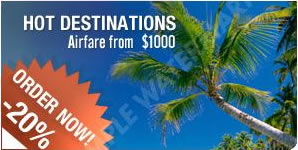Kaffa – the birthplace of coffee: Kaffa is found in South West Ethiopia. The area is endowed with natural forest and coffee. The area was on a trade route to Sudan and other parts of Africa and on trade route to Arabia Peninsula, which perhaps explains the spread of coffee in that directon.
Coffee – the pillar economy of Ethiopia: According to different sources, coffee was identified around 1000 years ago. Its first indentification is related with the sheepherder named Kaldi. He noticed that the sheep became changed its behaviour after eating the red berries. The area was on a trade route to Arabia, which resulted in the spread of coffee to Yemen. Then Ottoman Turks introduced it to Constantinople.
Coffee is the main cash crop from which the country earns good foreign currency. Culturally, it is also important in the country. Coffee ceremony is well known in Ethiopia. Both Coffee arabica and Coffee robusta are grown in the country.
Jimma –South West historical site: and courage.

Jimma is one of the famous coffee growing areas of Western Oromia. It is reputed for its history and intact natural beauty. It was the trade route of the 19th century where many people used to attend the ancient great Thurday market at Hirmata, the current site of Jimma.
The Kingdom of Jimma Aba Jifar – the strongest Oromo state The kingdom of Jimma Aba Jifar was established around 1830. It was the largest and most powerful of the five kingdoms of Gibe. The five kingdoms were Jimma, Ennarya, Gera, Guma, and Gomma. After Aba Jifar, I ruled for 25 years the next very strong ruler, Aba Jifer II came to power. Aba Jifer II ruled from 1878 to 1932. Jimma was the center market, which used to attract many merchants from the surroundings areas and its location on trade route resulted in advancement economy and military. The Silver Maria Theressa Dollar and bars of salt were the main circulation of currency in Jimma.

T
he palace of Aba Jifar II at Jiren: This impressive palace that is about 8 kms from the center of Jimma city was built by the cost of 400 kg of Gold and 65000 Maria Theressa Dollars towards the end of 1860’s. The palace stands with colorful architectural beauty. In the compound of the palace still stand other four buildings: the public mosque, the mosque of Abba Jifar, residential palace of Aba Jifar, residential palace of Aba Jobir and Aba Dula (the grandson of Aba Jifar).
The Museum : The museum displays most of historical materials of King Abba Jifar, his kingdom and cultural objects of local Oromo People. The first set of collection in this museum is the personal household furniture of the king that includes beds of Abba Jifar, armchairs, utensils, religious manuscripts and others.
Bonga – was the most important commercial center. Commodities like gold, civet, coffee, cotton used to be exported. The area was also part of Kaffa kingdom that its existence dates back to 14th century. Kaffa kingdom was very strong and used to be ruled by many kings. The last king was Gaki Sherocho.
In the surrounding areas of Bonga town, Medhane Alem Monastery and Beha Giorgis Monastery can be visited. The caves, waterfalls, natural bridges and hotspring water are very interesting to visit in the surrounding areas.





